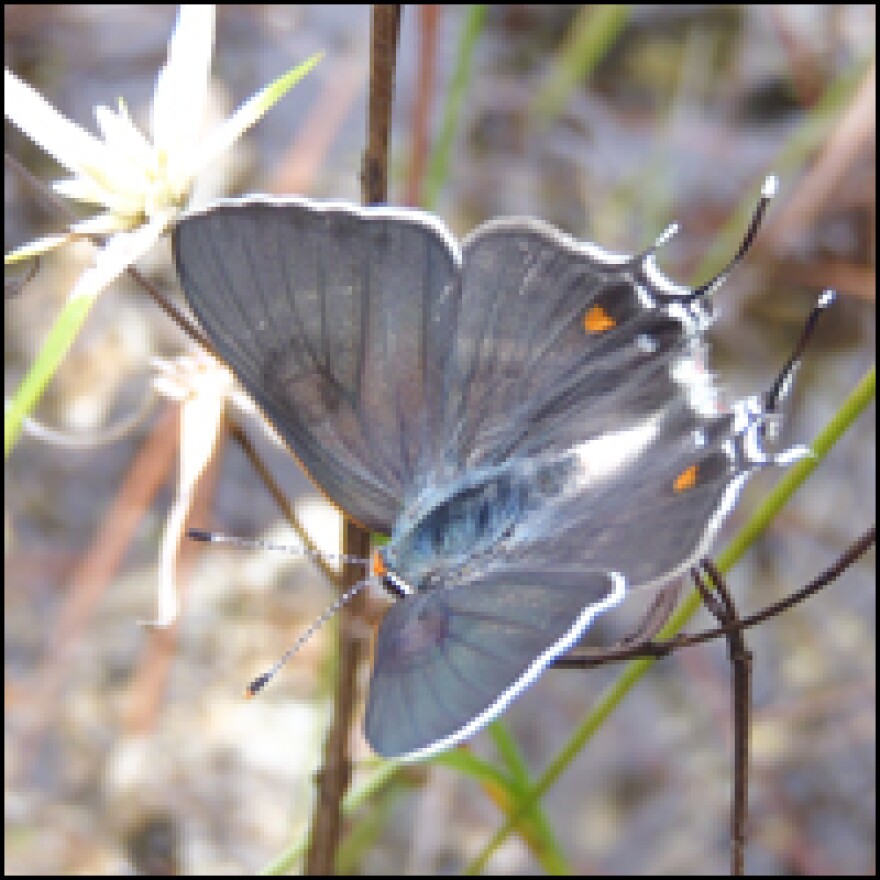Federal wildlife managers in the Florida Keys are planning controlled burns on Big Pine Key this summer to help the Bartram's hairstreak butterfly.
The inch-long butterfly was added to the federal Endangered Species List last August. It lives only in pine rocklands and only a few fragments of that habitat remain in Miami-Dade and Monroe counties.
The Bartram's Hairstreak relies on the pineland croton as a host plant. The butterflies lay their eggs on the plant and the larvae eat the leaves.
Without fires, pine rocklands turn into hardwood hammocks, where big trees provide too much shade for the shrubby plants. Occasional wildfires used to keep that succession in check. Now wildlife managers use controlled burns.
The fires help open up the canopy so the sun can reach the shrubbier plants like the crotons, said Nancy Finley, manager of the national wildlife refuges in the Keys including the National Key Deer Refuge on Big Pine. The fires also add nutrients to the soil and remove leaf litter that can smother seedlings.
Finley said the burns will take place on about 10 acres at a time and only when the soil is moist after recent rain.






